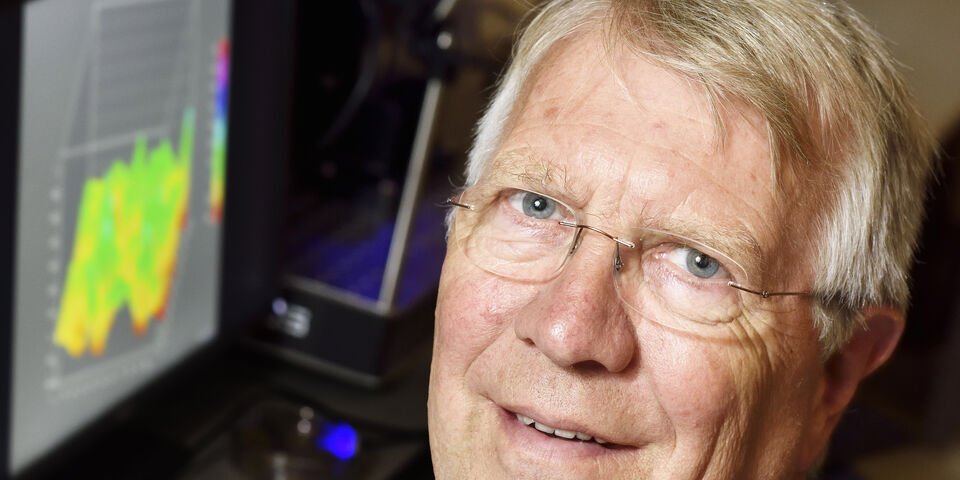Liquid crystals in motion
Although he is entitled to a pension, it will still be some time before Dick Broer will sit back to watch the grass grow. With a prestigious European Advanced Grant of 2.5 million euro the polymer chemist intends to produce a grand thing once more over the next five years. His goal? Materials coming into motion under the influence of light or electric voltage, with which you can make self-cleaning coatings, braille displays for tablets, or who knows what else.
Broer’s scientific life revolves around liquid crystals, to which the new project forms no exception. What is special about liquid crystals is that you can change the direction of these molecules, or the degree of their ordering, by exposing them to a voltage, light, or heat. The orientation of the molecules vis-à-vis the polarization of the light determines the optical properties of the material (more specifically: whether it turns the polarization of the light, or leaves it unchanged). The action of liquid crystal displays (LCDs), to which Broer made significant contributions when working for Philips, is based on those electrically variable optical properties.
There is more that liquid crystals can offer, though: if they are composed of, say, rod-shaped molecules, which all point in the same direction in the so-called liquid crystalline phase, the material occupies more space in that direction than in the directions at right angles to this. When you subsequently pass to a less ordered phase, the material shrinks longitudinally, while expanding in the other directions. In that way you create motion in the material itself. It is that motion which Broer is focusing on at present, and which he hopes will give a fitting final performance to his career.
During a visit to the laboratories in Helix and Ceres (headquarters of the Institute for Complex Molecular Systems, with which Broer is also affiliated) it becomes clear that those moving materials are not a thing of the distant future. PhD candidate Anne Hélène Gelebart makes transparent pieces of flexible foil move by illuminating them with a UV lamp. She is also working on grass-stalk-like liquid crystals, with which you could mix liquids in micro channels, or, on a bigger scale, make wallpaper with a ventilating action.
Postdoc Danqing Liu shows in the lab in Ceres how smooth foils of liquid crystals suddenly develop ribs when submitted to electric tension. “This allows you to change surfaces from rough to smooth at will, for example”, Broer explains. “Thus, you can make micro robots pick up things and put them down again. Or you can make a braille keyboard for tablets.” And by means of the rib coatings you could clean solar cells in the desert after a sandstorm – without any water. Especially if you can make the ribs move across the surface like a running (dry) wave.
In order to develop such ideas further in practice, TU/e this spring set up a new institute together with the South China Normal University, the Laboratory for Device Integrated Responsive Materials (DIRM) in Guangzhou. “There they are going to produce prototypes based on our ideas from the lab”, says Dick Broer. He is scientific director of the DIRM; no sitting back to watch the grass grow for a long time yet.


Discussion